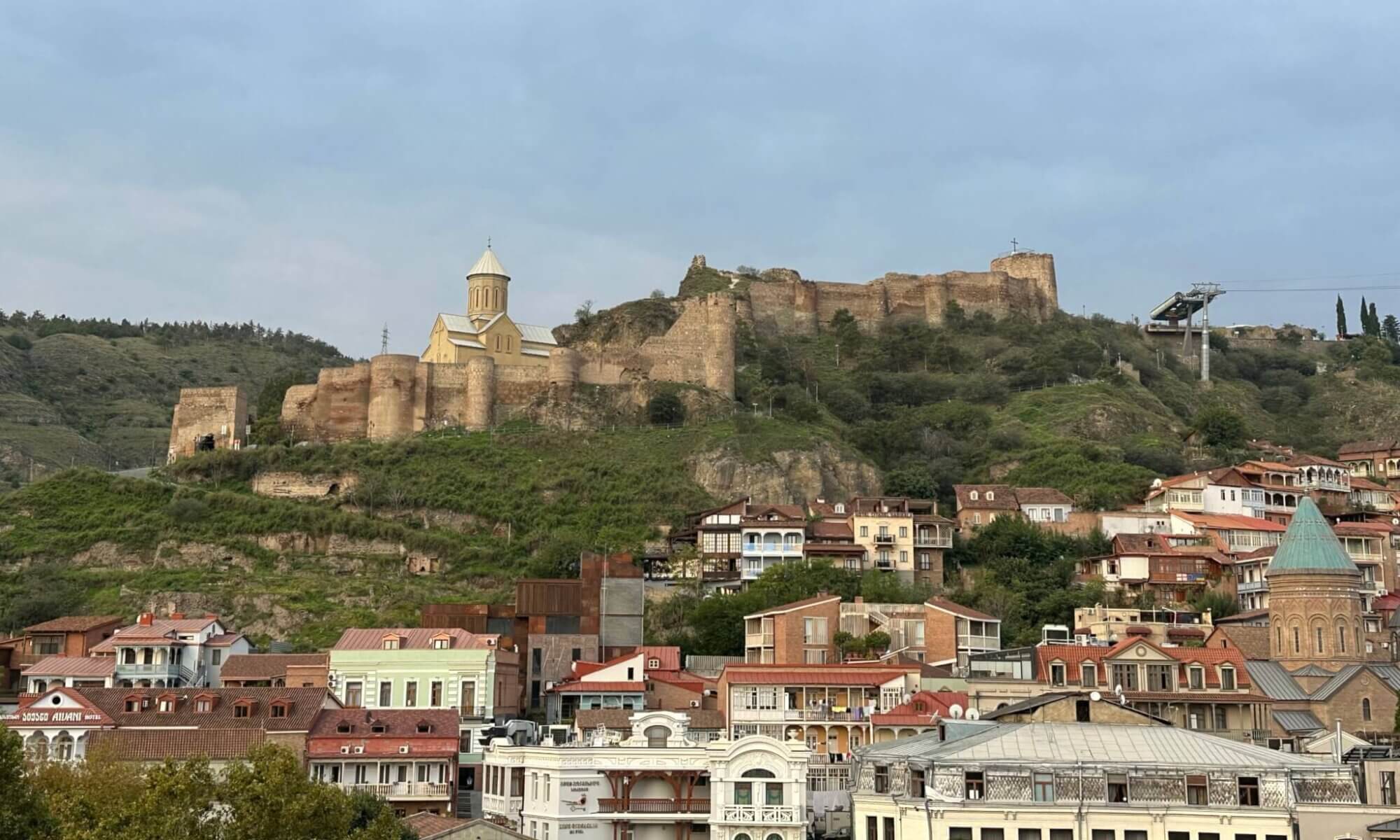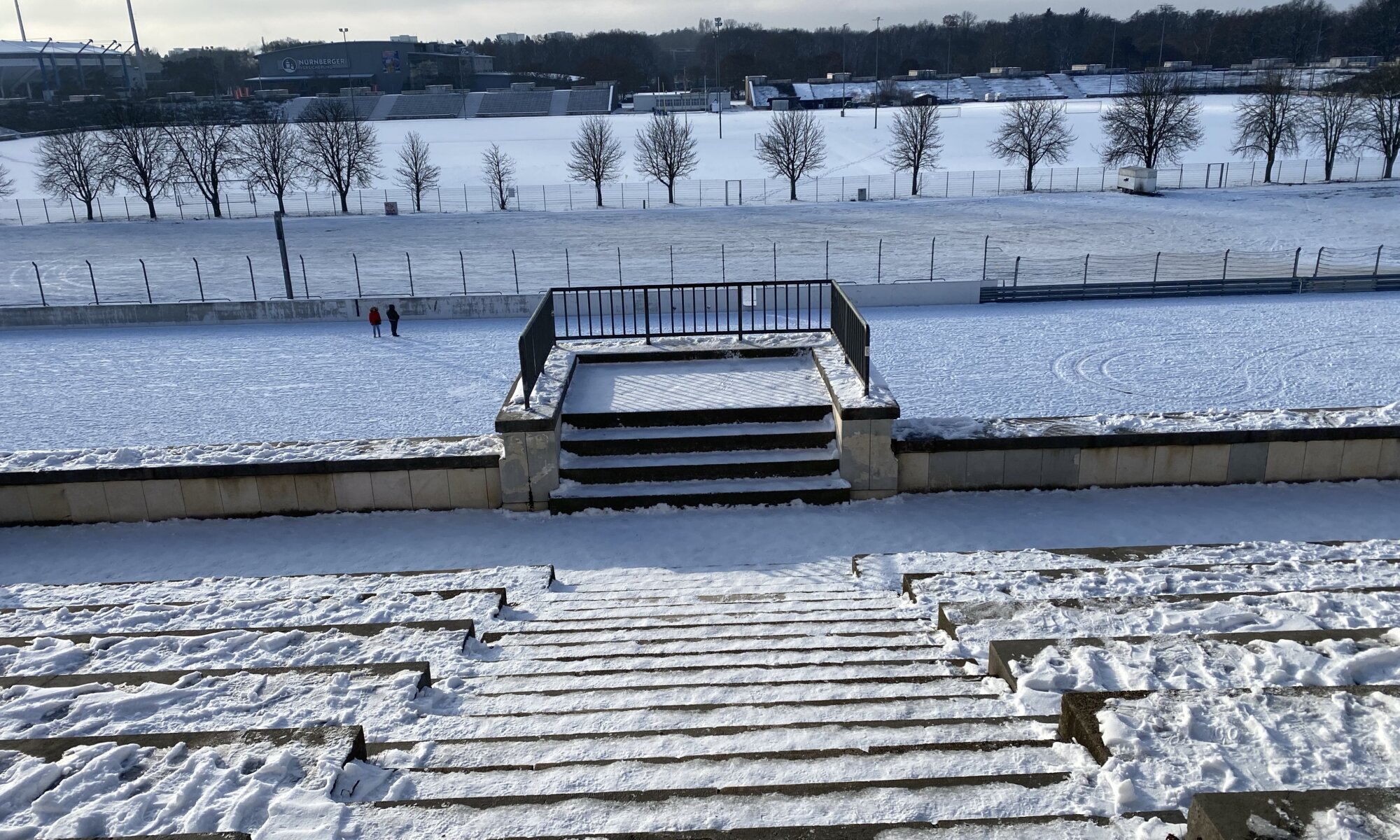Until 1933 the area around the Dutzendteich lake in the East of Nürnberg, Germany, was used for recreation. People could swim in the lake and restaurants as well as coffee bars were a much welcomed destination for an excursion on weekends. In the Luitpoldhain park nearby the Luitpoldhalle in art nouveau style was home to exhibitions and the park was used for political rallies. And then in 1933 the fascist organization Nationalsozialistische Deutsche Arbeiterpartei (NSDAP) decided to make Nürnberg the host city for their political rallies, the Reichsparteitage, for the next 100 years.
That brought many visitors and a lot of prosperity to the city, but also changed this area dramatically. The Nazis planned and partially created vast buildings in fascist style. They were referring to historic places and should not only give Nazi Germany its place in history: the buildings designed by Adolf Hitlers most favorite architect Albert Speer scaled the historic references up. But if you look closely you can find out that a lot of this is only illusion: behind the marble facades you’ll see plain red bricks.
| Building | Referring to | Status |
| Kongresshalle | Colosseo, Roma | Partially built, exterior ring standing, used as a museum, storage and parking area. |
| Deutsches Stadion | Olympic stadium, Αθήνα | Building pit and foundation stone. |
| Zeppelintribüne | Pergamon altar, Πέργαμον (today Turkey) | Main building standing, but columns removed. |
The Kongresshalle
50,000 spectators were planned to gather in the congress hall. It is the second-largest fascist building in Germany after the Prora complex on the island Rügen. The U-shaped building should have been 70 meters high, but it was never finished. Only the outer rim has been built, the interior and the roof were never built. Today it hosts the Dokumentationszentrum Reichsparteitagsgelände, a museum giving you insight into the history of this place. The building is also used as a storage area and you can park were originally the Nazi party members should have debated. Its design was inspired by the Colosseo at Roma.
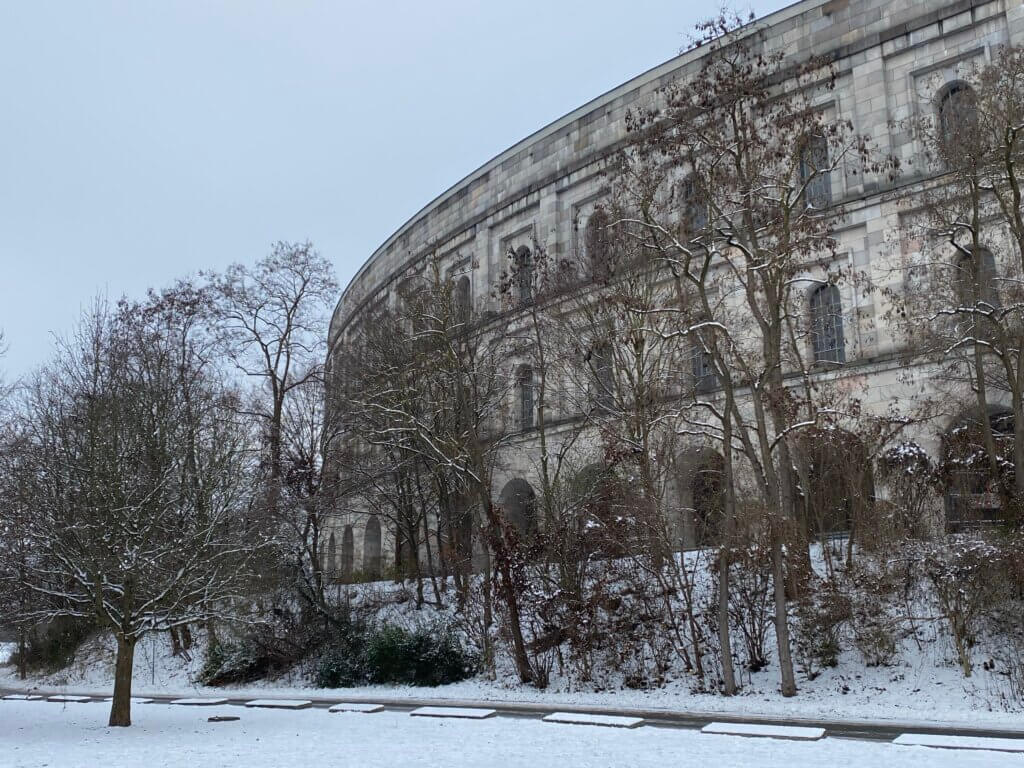
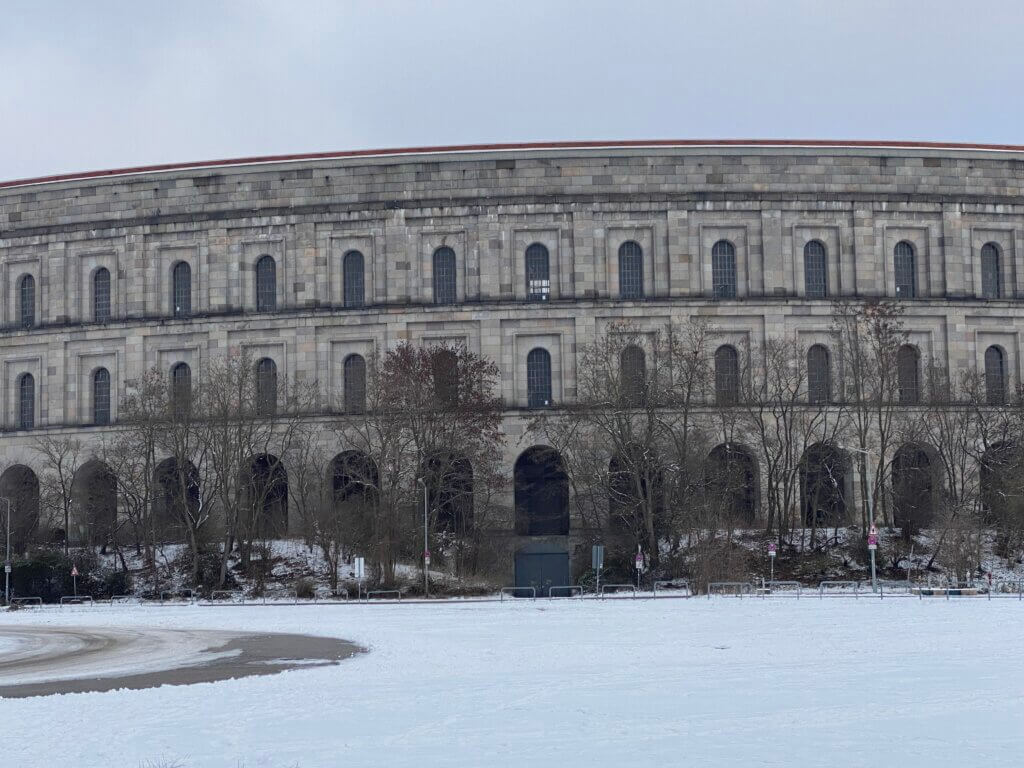
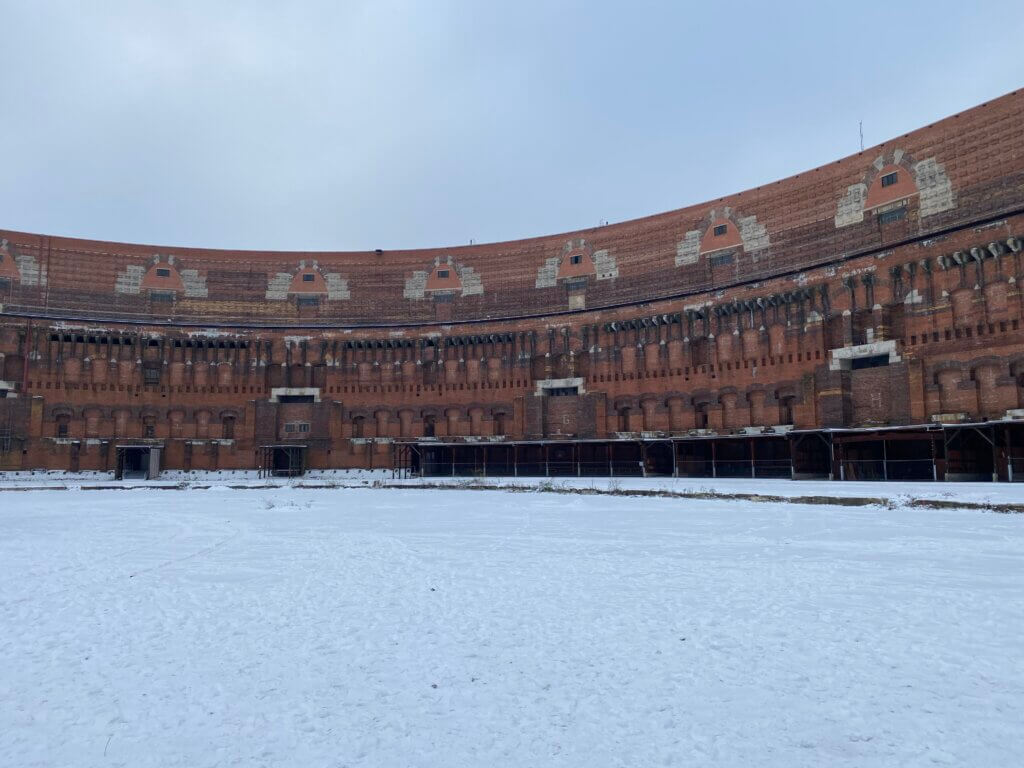
The Deutsches Stadion
The Silbersee lake isn’t really a lake. It is the building pit of a stadium that never has been realized. An impressive stadium for 405,000 (!) spectators, it would have been the largest stadium in the world (today the stadium at Praha, Czech Republic, hosts 250,000 spectators). What remained is the pit and a foundation stone, nothing more; but not far away from Nürnberg at Hirschbach-Oberklausen you can find the remains of a model of the stands. The design followed ancient examples like the Olympic stadium of Αθήνα.
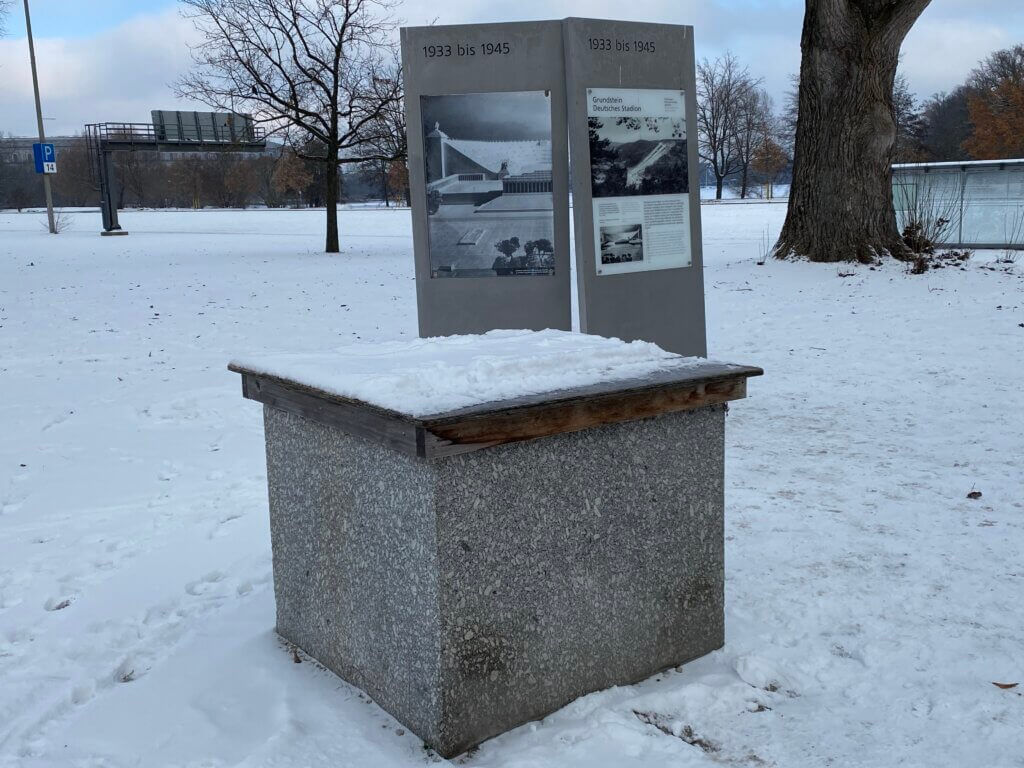
The Zeppelinfeld und Tribüne
Well known from historical documentations on TV is the Zeppelinfeld with the vast stands used by Adolf Hitler to address the masses. Leni Riefenstahls movies about the NSDAP party rallies preserved these obscure events. The main building is still standing, but the columns on both sides had to be removed because of structural problems. The giant Nazi swastika on top was destroyed by the US army in April 1945. The area is named after count Ferdinand von Zeppelin who landed there with an airship; he had nothing to do with Nazi propaganda as he already died in 1917. The main building is said to be designed after the historic Pergamon altar.
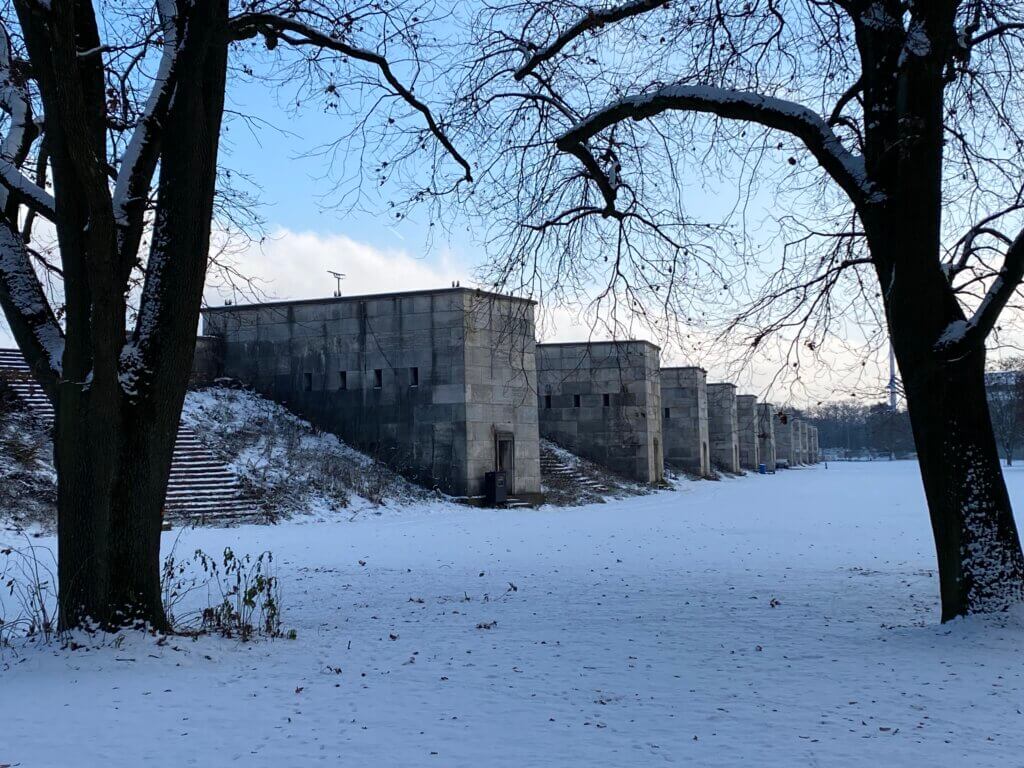
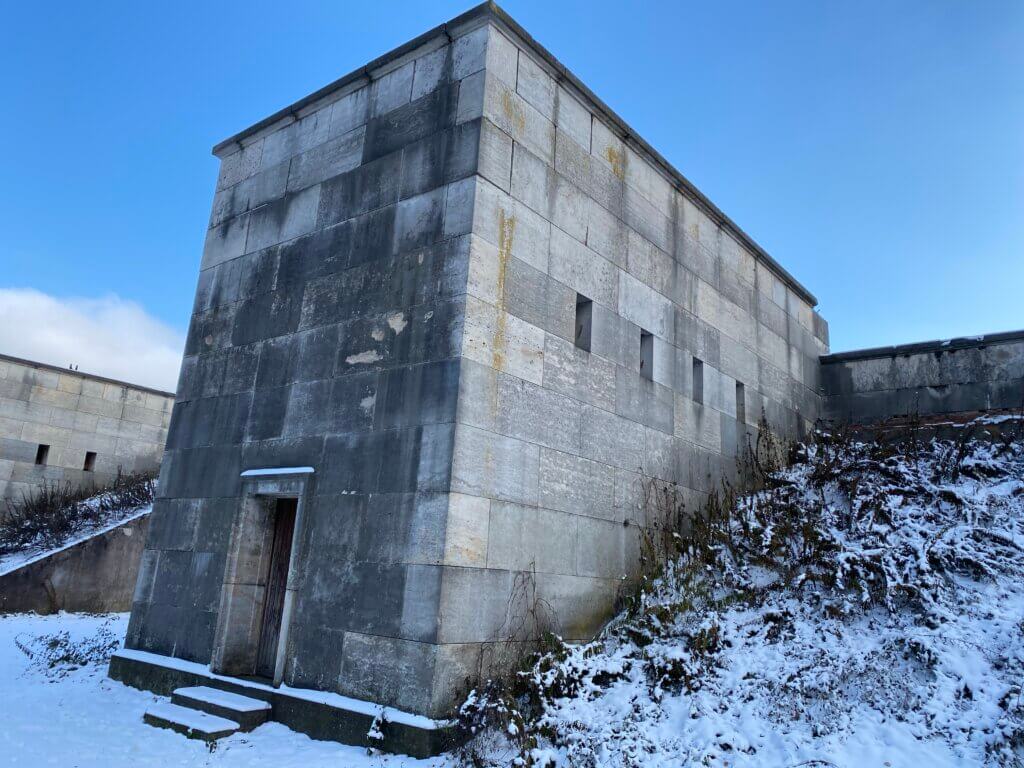
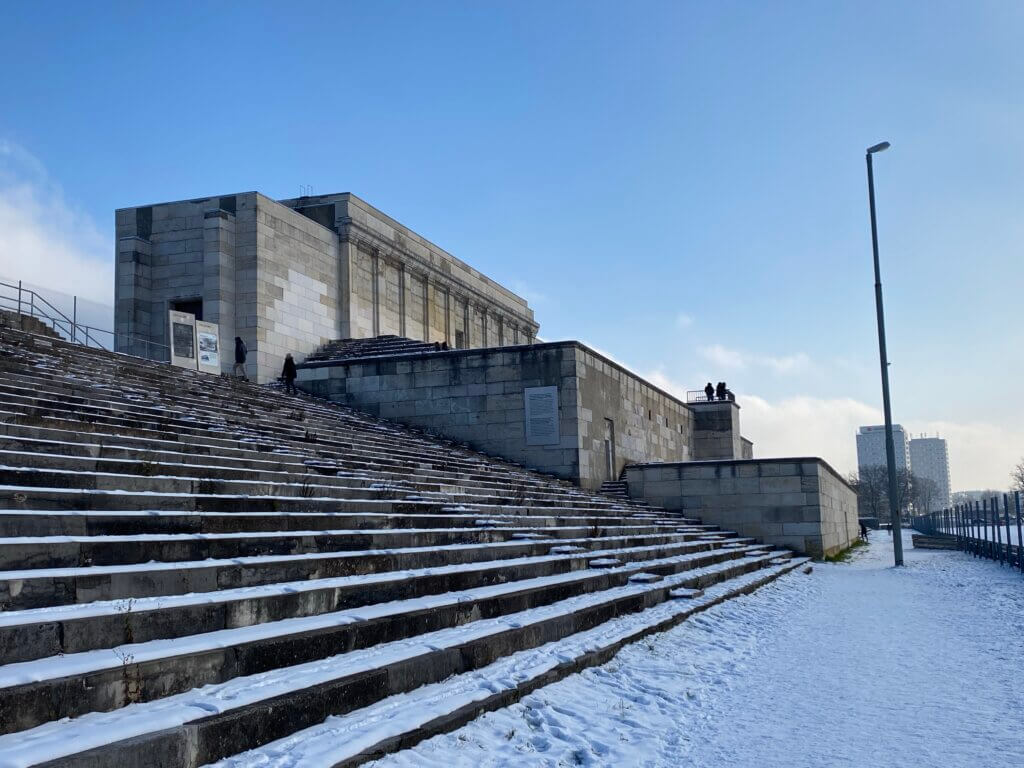
The Reichsparteitagsgelände is worth a visit and you should best start with the Dokumentationszentrum Reichsparteitagsgelände, the museum within the Kongresshalle. From there you can walk to the Zeppelinfeld and the foundation stone of the Deutsches Stadion. You can also see the vast Große Straße leading through the area and take a look at the Stadion der Hitlerjugend which is today known as the Max-Morlock-Stadion and home to the soccer club 1. FC Nürnberg.
Next door: Ehrenhalle / Luitpoldpark / Luitpoldhalle
The Luitpoldhain is located directly next to the Kongresshalle. The Luitpoldhalle, as a convention center first used for NSDAP party rallies is completely lost and today a parking area. But visiting this space is still a good idea because of the wonderful Luitpoldpark and the Ehrenhalle building, dedicated to the fallen of World War I.
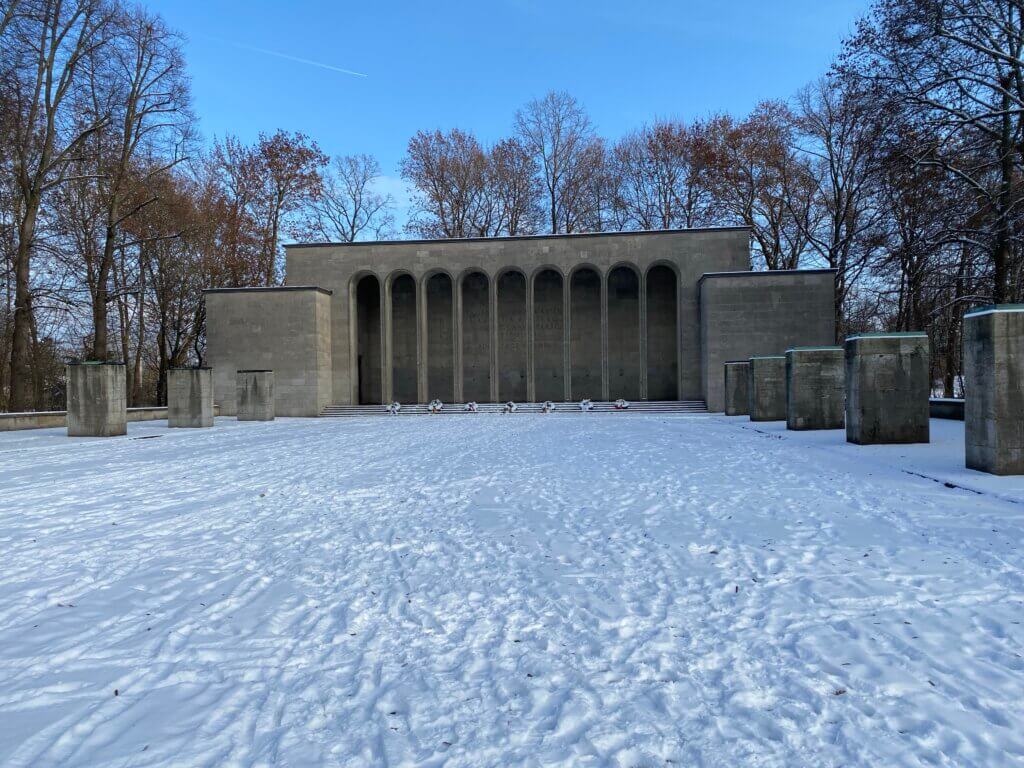

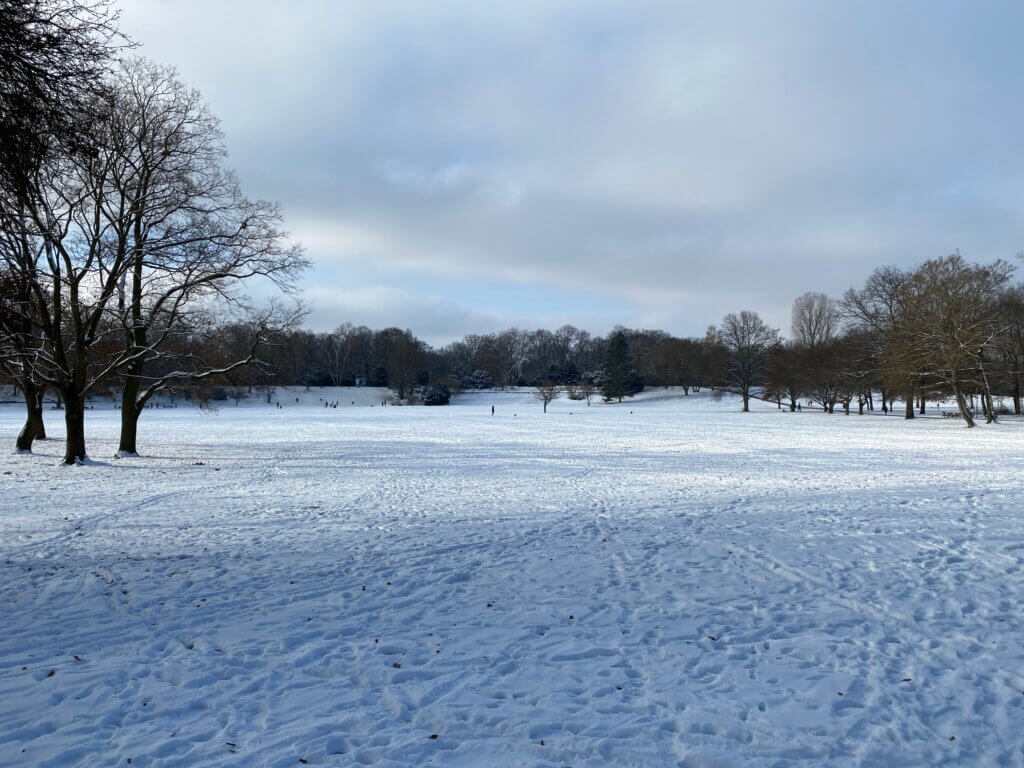
Reichsparteitagsgelande
Dokumentationszentrum Reichsparteitagsgelände
Bayernstraße 110
90478 Nürnberg
Germany
https://museen.nuernberg.de/dokuzentrum/
Loading map...

